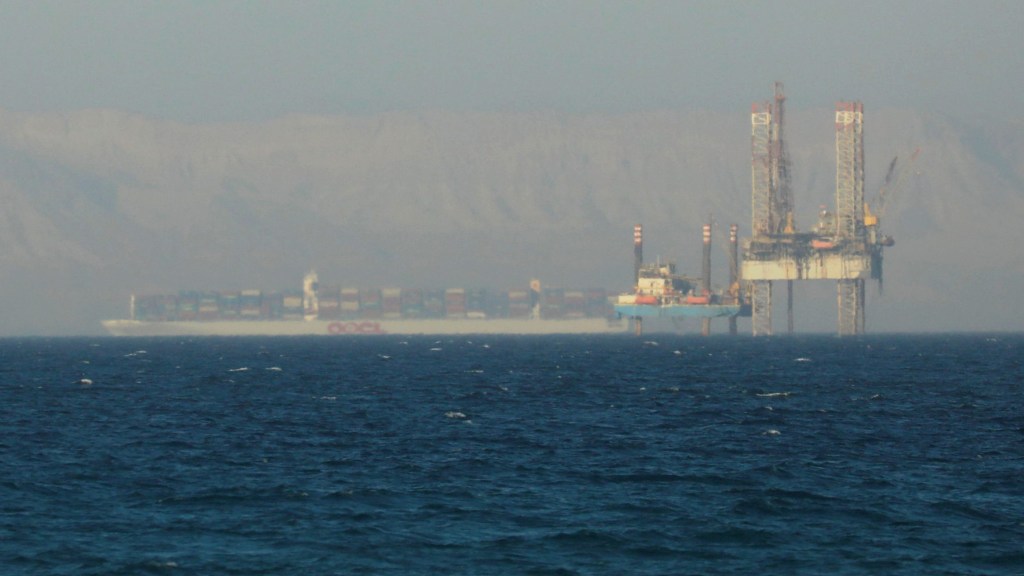– By Rahul Garg
Amidst the dynamic rhythms of global commerce, a new challenge emerges: the Red Sea crisis. Political turmoil in the Middle East and subsequent Houthi attacks in the Red Sea has forced shipping companies to redirect their vessels from the region. This decision, triggered by security concerns, is having a ripple effect across businesses, impacting Indian exporters in several ways, including delayed payments and increased financial pressure. According to India Ratings and Research (Ind-Ra), the ongoing disruptions along the Red Sea route may raise freight and forwarding costs for businesses engaged in international trade by 25-30%.
The Red Sea Crisis: Causes and Consequences
The Red Sea, a vital oceanic artery connecting Asia and Europe, has witnessed a rise in piracy and military activities in recent times. To mitigate these risks, leading shipping companies have opted to reroute their vessels, primarily around Africa’s Cape of Good Hope. While this measure may enhance maritime safety, it disrupts the established routes and operations of global supply chains. As a result, exporters are facing increased transportation costs and longer transit times, leading to diminished global demand for their products.
For Indian exporters, the consequences are twofold. Firstly, the increased costs associated with the longer route make Indian goods less competitive in the international market, potentially leading to a decline in demand. Secondly, the longer journey times result in delayed deliveries, which means Indian exporters have to wait longer for their payments to be cleared. This puts significant strain on their working capital, as they have to pay for production and other expenses upfront before receiving payment.
Troubled Waters: Impact on Indian Exporters
Indian exporters, known for their competitive edge, are particularly susceptible to the challenges posed by the Red Sea diversions. The delays in receiving payments can disrupt their cash flow, impacting their ability to invest in raw materials, production, and marketing. This can be particularly detrimental to Micro, Small and Medium-sized enterprises (MSMEs) with limited financial reserves.
Specific industries like pharmaceuticals and agricultural products, which rely heavily on timely deliveries, are facing significant challenges. The perishable nature of these products, combined with extended shipping times, can lead to increased spoilage and wasted resources.
Perhaps the biggest impact, however, has been on India’s rice exports. India is the world’s biggest rice exporter, shipping over 4.5 million tonnes of basmati rice every year. Majority of the ships carrying rice out of India go through the Red Sea. With ships rerouted, adding 6,500 km to the journey, the freight costs for Indian exporters have shot up 5x.
Finding a Lifejacket: Strategies for Mitigation
In this challenging environment, Indian exporters can adopt several strategies to navigate the crisis.
Diversifying transportation routes: Exploring alternative ports and shipping lines can reduce reliance on the affected route. By identifying and utilizing alternative modes of transport, such as air freight or land routes in tandem with maritime routes, businesses can not only mitigate disruptions but also gain access to expedited delivery options.
Diversification of Production and Sourcing: By establishing multiple production facilities across different regions, dependency on single locations can be reduced, mitigating the risk of disruptions. Furthermore, identifying alternative sourcing options for critical materials or components adds an additional layer of security to the supply chain, ensuring continuity of operations even in the face of unforeseen challenges.
Partnering with Reliable Suppliers: This involves cultivating long-term relationships with suppliers known for their reliability and flexibility, fostering trust and collaboration. By working closely with suppliers, businesses can develop contingency plans and response strategies to effectively address unforeseen challenges.
Optimizing inventory management practices: It can help exporters mitigate the risks associated with delayed shipments and fluctuating demand. By maintaining adequate buffer stocks and leveraging advanced forecasting techniques, exporters can enhance their agility in responding to supply chain disruptions while minimizing inventory holding costs.
Robust financial planning and liquidity management: It is also imperative for exporters to navigate the cash flow challenges stemming from delayed payments. Exploring financing options such as trade finance facilities or supply chain financing can provide exporters with the necessary liquidity to sustain their operations during turbulent times.
Leveraging Information Technology: By implementing advanced supply chain management systems, businesses gain real-time tracking and monitoring capabilities, enabling better visibility into the movement of shipments. Additionally, investing in predictive analytics and automation equips organizations with the tools to anticipate disruptions and optimize supply chain operations proactively.
Government Initiatives and Support Keeping Afloat
In response to the challenges faced by exporters, the Indian government has taken proactive measures. Union Commerce and Industry Minister Piyush Goyal recently informed parliament of the establishment of a task force under the Department of Commerce. This task force aims “to identify, categorise and develop tailored strategies” for resolution of non-tariff barriers. Additionally, the government is providing financial assistance through schemes like the Export Credit Guarantee Corporation (ECGC), which offers insurance against export risks. Moreover, collaborative efforts with international partners are underway to address security concerns in the Red Sea and encourage shipping companies to resume normal operations.
While these initiatives are a step in the right direction, the effectiveness can be further improved by streamlining bureaucratic processes for accessing financial assistance and actively engaging with shipping companies to understand their concerns and find collaborative solutions.
Conclusion
The Red Sea diversions have presented Indian exporters with a significant hurdle. However, through a combination of proactive measures, government support, and building long-term resilience, they can navigate the current crisis and emerge stronger. By diversifying supply chains, strengthening partnerships, and embracing technology, businesses can build resilience to withstand future shocks. Collaboration among all stakeholders, including exporters, shipping companies, and the government, is crucial to ensure the smooth flow of global trade. There is a clear need to build more robust and adaptable supply chains that can withstand future challenges.
(Rahul Garg is the founder and CEO of Moglix.)
(Disclaimer: Views expressed are personal and do not reflect the official position or policy of Financial Express Online. Reproducing this content without permission is prohibited.)

